The enigma of Kaspar Hauser
Many years ago in my teenage years back in the 1970’ies a film came up in the cinemas, that anyone with the taste of quality movies and good readings had to see. The German director Werner Herzog took up the story in his movie from 1974 The Enigma of Kaspar Hauser. Herzog took the theme, the enigma and did a quiet psychological portrait of this fringe character at the same time showing the human mindset. In many of his films you will find these human beings in fringe condition, which is in the interest of the director. And fringe extreme humans too, which another of his films 2 years earlier: Aguirre, Wrath of God with the even so extreme and megalomaniac actor Klaus Kinski as the main character.

Herzog has done a lot of documentary film, and the enigma story about the strange boy without language who came out of nowhere has certain elements of documentary drama, although he is not really interested in historical reality, he is interested in what he can do with the character.
The story itself though is very real, and British historian Terry Boardman held a lecture in 2012 at a conference about this very real story. His approach is quite different than Herzogs, of course, he is a historian. And a remarkable one, since his background has allowed him angle it differently than most other historians. He has a very critical approach to what we would call mainstream British imperial historicity. He lived 7 years in Japan which allowed him to observe and understand certain things about his own culture. And then he is well read in Rudolf Steiners philosophy and spiritual understanding of human history. And with all respect for auteur and master film maker Herzog, this brings much more depth to the enigma of the boy, that fell down from heaven – or more likely crawled out of a hole in the earth, as we shall see.
http://threeman.org/

The problem of historicity
Many historians are excellent narrators, they have done a lot of studies, they have a lot of factual knowledge and they are skilled writers. But something is missing. What is special about Boardman’s method is his concoction of history, philosophy and esoteric knowledge. He further conjures up personal biographies with world events, which all historians claim they do without actually doing so. Boardman is fully aware that what we see is not always what happens. He knows that events are brewed by people who know the hidden undercurrents and who are able to exploit them to their advantage. He is not ashamed to use words in English like ‘conspiracy, elite, secret societies’, because he knows their agendas and contributions to our common destinies. Since, despite his education, he does not have the usual mainstream academy inhibitions, he is able to create a coherent picture of events and to link events that seem to have nothing to do with each other.
That’s what’s missing in mainstream history, and what makes it strangely two-dimensional. Then this event took place, and then that war broke out [year] between this and that prince [year]. Or we all get the anecdotes about the great men, without it being quite clear what we are going to do with all that person worship. Or rather: we must of course adore them, because they have paid for their historical portraits. Of course, historians can establish contexts, but the contexts they choose are often right-handed, so one has the feeling that they have been served a dish on their plate to eat and digest for us.
I know, because I myself have the fairly great driver’s license in a branch of art history called music history. Then Mozart said, but then his father said, and is it not great, and hear just the 1st movement from the Jupiter Symphony, and how he in the performance part,… blah-blah. Italian music historians, together with the English historian Robert Newman, are currently tearing the Mozart myth to pieces, and when their work is completed, it may well turn out, if their basic thesis holds true to the finish line, that Mozart was one of the best-selling fake figures in music history. He was according to this group of researchers a mediocre musician and composer, staged by the Viennese and Venetian music industry that had emerged at this time. Only quite a few of his works originate from his hand, but are written by a whole strip of the most excellent Italian, Austrian, German and Bohemian composers of the time, several of whom are totally under-described in music history. The genius Mozart can only be thought of as a successful PR stunt from the Enlightenment. It will make music lovers, musicians and researchers boil over in indignation. The latter especially because all the facts that they should have spotted were supposed to lie ‘smack in their face’. Let’s see what that leads to.

An unfortunate mechanism – and this applies not only to history writing but all branches of science – is that often at some point early in the history of the subject some premises have formed, some books on the subject that have been canonized as valid for posterity. All are based on these books and authors, who are often the patriarchs of their field. They can be close to the source physically and temporally. And this is where the trap claps, for they can make horrible mistakes non the less. A good scientist must therefore be almost like a criminologist or detective, turning every stone and asking questions about everything.
Non-presence
Kaspar Hauser, compared to Mozart, is not an over-hyped genius but a downtrodden one, a genius who never came to honor and dignity. Terry Boardman was interested in what happens when something ‘gets taken out’ when a piece is missing in a major game. A hole is opened, a wound is opened for bleeding and poisoning, fiddled with events, power relations and destinies – personally and collectively, and a scar is left. This interesting story of suffering thus becomes both a study of evil in its many facets and how it is brought into the world – and then also an example of how to obstruct history, so to speak.
Orwell said:
Those who control the past control the future.
And those who control the present control the past.
The statement describes in a nutshell what the biggest problem of historicity – and thus all of us – is. The problem is the special interest of the history-writing elite in imprinting on us at all costs and by all available means what our past has been in order to guide us to a future that exists for them and them alone. The problem can also be said raw and simple: it is the extent of lies in the narratives that describe our past that poisons our present and future.
History and retelling is an integral part of our school system. The story of Kaspar Hauser is therefore also the story of German school children who are told a fairy tale about what their past has been and what their future will therefore be.
Rudolf Steiner said:
Humans only discover what is present,
they are not aware of what is NOT present.

In historicity, it would traditionally be considered counter-factual. It has long been quite forbidden in historical research to deal with hypotheses about what might have happened if something or someone had been present that was taken out. People have been murdered on streak in the course of history. How has this created history, and what would be the consequence if it had not happened? Nevertheless, it is extremely fruitful to take that point of view, because here it dawns on us that we always have alternatives and choices. All too often we are told that something was random and that we therefore had no choice. One is therefore referred to random fatalism. And those responsible are not prosecuted.
Or, if we adhere to the school of historical materialism, history is deterministic and cannot be avoided. Marx prophesied, thus it is bound to happen. But of course we have to make and force it happen through revolution – a severe kind of self contradiction one should think.
Kaspar Hauser has been attacked and sacrificed, both in the German and English-speaking world from his appearance on the world stage in Nuremberg in 1812 until today. He did not feel that he had received a full explanation through his studies at the University of Manchester about this ‘Mother of the World Wars’. It was as if official English history did not want people to ask question and speak out about that topic. Why?

It quickly dawned on him that an Englishman, Lord Stanhope, the 2nd Earl of Stanhope, was playing a special and not very charming role. His production makes a big loop by starting with today, going back to the 19th century and working his way back to today.
United States of Europe
On June 28, 2011, the Maoist José Manuel Baroso and the Jesuit von Rompoy presented a roadmap and a calendar for a total economic and political unification of the countries of the EU. In other words, the EU State with full super national control over all national economies (fiscal integration) and the cessation of all national independence. Approx. 100 years before, on June 28, 1914, the Archduke of Austria, Prince Ferdinand, was assassinated by a gunshot in Sarajevo, starting World War I. The Peace of Versailles was signed June 28, 1918. These are the footprints of people obsessed with power rituals.
The EU / Europe already has a de facto flag, a national anthem, a president, a foreign minister, a commissariat, a parliament, a government and an army – it is called NATO and is in the pocket of the United States, which is in the pocket of the British Empire. And as we shall see later, the EU was conceived by the British elite in the 19th century. All that is missing is a formal declaration of the United States of Europe.
It is stated in the British publications that it is Germany and Angela Merkel who want all this. The English present it as a German plot to fabricate a European super state. Here we go again: It was not us, it was the others.
The German Foreign Minister back the was called Guido Westerwelle. Translated it will mean: ‘the guide of the wave from the west’ – history invents these ironic names. He is one of the players in the transatlantic group in the German government and a member of several of these special ‘think tanks’ found across the Atlantic. Former Foreign Minister Joschka Fischer – the man who was filmed in the happy 68s and Baader-Meinhof days while throwing a firebomb into a police car – says we can thank the financial market that we now have a charitable EU State coming up.
The financial market is just another word for The City of London and Wall Street.Former members of Goldman Sachs now sit as heads of European governments and institutions in Greece, Italy and the ECB – to make sure, that still have access to the national treasuries.
The financial magazine The Economist is the body and mouthpiece of the Anglo-American elite. The magazine now directly recommends a European superstate. And are the peoples of Europe being asked?
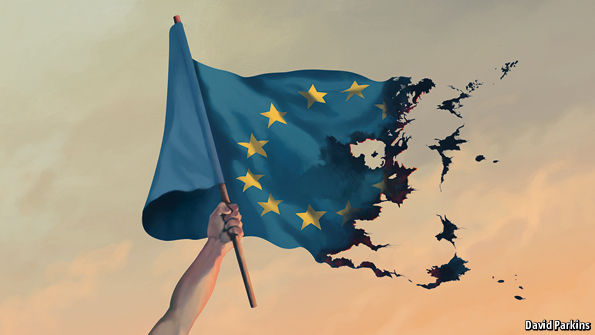
Niall Ferguson is considered a leading British historian. He provides the answer to that question. He is completely in bed with the elite and in that way their mouthpiece. He is an insider and everything he says is to be regarded as statements ‘From the horse’s mouth’. Among other things, he is the official biographer of the Rothschild family. Now he works in another key elite institution: Harward University. In his writings he says: The United States must fully recognize and take over the British Empire. He further writes that one would never be able to achieve federalism in the EU in a democratic way, but has had to sneak it in through the back door. That Europeans could vote against it has never been a possibility. Here we may remember how Ireland was bullied into approving the treaty last time it got updated. Now the union is arriving in the same rowdy way: using threats and fraud. Ferguson also suggests what many have been aware that the financial crisis has been a piece of engineering with a special purpose: the United States of Europe in 2013.
Looking back
One step back. Winston Churchill gave a speech on 14 May 1947 in London, in which he said:
Of course, we do not pretend that a united Europe means a final, complete solution to the problems of all international relations. The establishment of an authoritative, almighty world order is the ultimate goal we strive for. Unless an effective overarching World Government can be set up and put into action, the prospects for peace and progress for humanity are questionable. But leave no doubt about the main purpose. Without a United States of Europe, there is no prospect of a world government. It is the urgent and inevitable step towards the realization of this ideal.
Churchill was very much an insider of the Anglo-American elite. We hear today that the euro may be collapsing. But these powerful elite groups have been pursuing their goals for at least 60 years. Should they give up their project so easily? Barely. The idea is probably rather that we are to get thoroughly nervous.

One more step back. According to Cecil Rhodes (1853-1902), only the English-speaking people had the right to dominate the world. They were the new Romans and had gotten the baton from there. So according to themselves. Two of his contemporaries, W.T. Stead and Reginald Brett, were of the same opinion and formed an 1891 company for the purpose of accomplishing this purpose. It was to happen through the navy, and by the unification of England and the United States, its colony which had fallen away in 1776. It has taken place today as the English, American, Canadian, Australian and New Zealand armies are brought together through their weapons systems, surveillance equipment, technology and close cooperation. Not even NATO has access to their system and the so called Five Eyes.
The Rhodes Trust was created for the purpose of bringing young Americans and potential leaders over to Oxford to fill them with imperial British ideas. Bill Clinton was one of them, the Australian president was one of them, etc. W.T. Stead, who was a socialist like many in the British elite at the time, wrote in 1902 a treatise called ‘The United States of Europe’. In the treaty, he enumerates three factors that should bring about ‘this most sweeping revolution in the history of mankind’:
- The world is being handed over to the English-speaking people like the new Rome
- The society is organized according to a socialist model
- Women are recognized as having the same rights as men
It is quite interesting, after all, that the ancestors of socialism were elitist imperialists, that feminism was part of this agenda, and that the phenomenon was conceived by men!
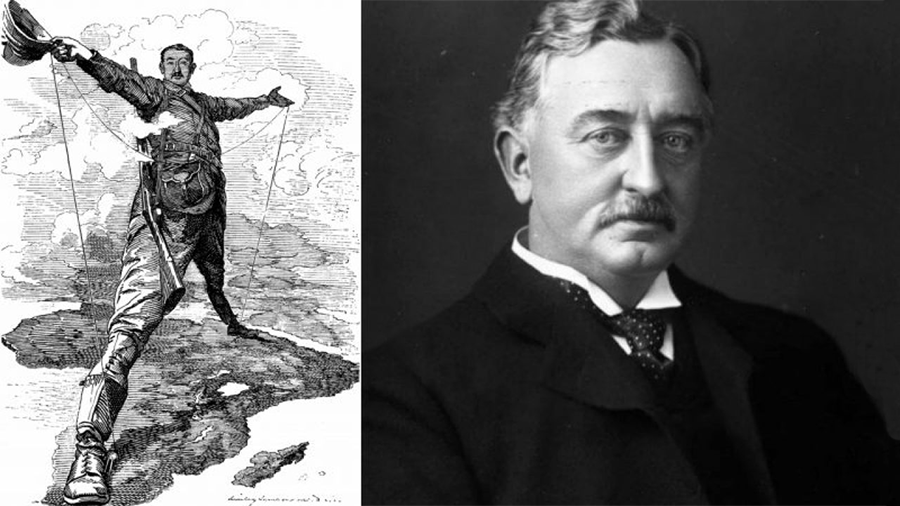
When we were young and naive, we thought of socialism as about being good to the poor and sharing the benefits nicely. Few have too much and fewer too little. And the animals and the old ladies must be happy too. We thought less of the fact that socialism means collectivism, oppression of the individual, herd mentality, state oppression, censorship, shame and accusation from the group, tyranny from elite commissioners, loss of civil rights, etc.
Stead writes in a letter to Rhodes, that he sees their endeavor as the reconstruction of the City of God and in the 19th century using modern means and accessories (technology) and as the medieval church in the 9th century on a foundation broad enough to include all of humanity. He sees it as a neo-clerical empire, a return to an updated version of the Holy Roman Empire. This was what was formed by Charlemagne, who was crowned emperor by the pope in the year 800. So again: what we today regard as progressive is and was at its core deeply regressive.
After Churchill, it went hand in hand with the Coal and Steel Union, the Treaty of Rome, etc. and for each approx. 7th year, a new initiative is being brought forward that brings the super state closer. Today we are at the last step. It is being smeared on the Germans, because it is not politically correct in England to join the EU. The hardcore Tories believe that the EU was started by the Nazis at the end of World War II, which is not entirely wrong. Unfortunately, however, they have not studied their own history far enough back, for it was their own comrades-in-arms who devised it. Here one could then ask further who invented Nazism, but that is a story that we will leave to Prof. Anthony Sutton.
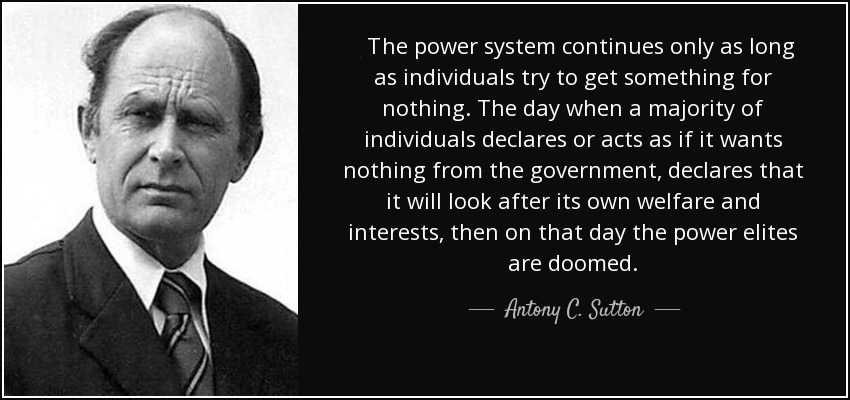
I The Economist, beskrives Tyskland som en maskine, en motor, en serie tandhjul. De anser tysk kultur som irrelevant og usofistikeret – ikke som den britiske, åndfulde. Tyskerne laver solide biler. Nytænkning af økonomi, nej, kultur, nej, åndfuldhed, nej, undermålere, ja.
This underestimation and arrogance towards German culture is in stark contrast to the real creations of this culture. The New Statesman, another elitist and respected magazine, brings a picture of Angela Merkel with half of her face torn off and terminator underneath. Rough jokes! The BBC has similar propaganda running. The arrogance of the English elite knows no bounds.
Kaspar Hauser
For those of you who have never heard of him, we ask to carry on with the long prelude. Two films have been made about him: as above mentioned Werner Herzogs: The Enigma of Kaspar Hauser (1974) and Andre Eisermann’s award-winning: Kaspar Hauser. The Man, the Myth, the Crime (1994). Herzog’s film was touching and artistic but did not really build on historical facts. Eisermanns, on the other hand, does. The film ends with a black screen with white text that says:
In 1993, 160 years after Kaspar Hauser’s death, the house (principality) Baden keeps its documents hidden from the public and remains silent about the affair.

An Emperor as vagabond
The House of Baden is the remnants of the principality and state of Baden, today the state of BadenWürtenberg in the southern corner of Germany bordering France and Switzerland. Kaspar Hauser was the presumed missing heir to the house of Baden, who was thrown into a basement throughout his childhood to prevent him from inheriting the title. Why?
Two years after Eisermanns film pointed a big fat finger at the House of Baden, Germany’s leading magazine, Der Spiegel, published an article entitled: Kaspar Hauser, the enchanted prince. Stefan Aust, editors-in-chief of der Spiegel, had arranged a press stunt in the very park in Ansbach where Kaspar Hauser was killed and presented what was apparently the genetic proof that he was not from the Baden family. It was based on what was claimed to be blood splatter from Kaspar Hauser’s underpants! They had used two experts for the study: a German and an English government-employed scientist from Birmingham, who hereby declare the Hauser story to be a romantic fable.
Oddly enough, on the front page of the issue of Der Spiegel there is a note about another article in the magazine about: Agent Mause, the German 007, ie an equivalent to James Bond, with the right to kill in Her Majesty’s service – while a British ‘agent’ for the government is investigating the blood. But the parallel goes even further: the man who had Kaspar Hauser murdered was Lord Stanhope, occultist and secret agent of the British Crown. We are reminded here of the actual 007, the scientist and the occultist and the agent John Dee , who’s signature in his letters is 007.
Science can be rigorous and factual, but if the material is false, the result will be either indifferent or directly harmful. Since science is often considered the highest authority, the religion of our age and time, there are many who would like to stick their fingers into science and have a piece. But that science has been involved is no guarantee in itself of truth, for science is highly manipulable. Who says they had researched the real underpants? Der Spiegel has strong historical ties to the Anglo-American elite dating back to the end of World War II. So why is the magazine just suddenly interested in ‘proving’ using a cover story that the story is a romantic fable, which people already perceived it as? This is what in criminology is called demeanor behavior – suspicious behavior. It should prove to be an end in itself for Der Spiegels’ propagandistic article.
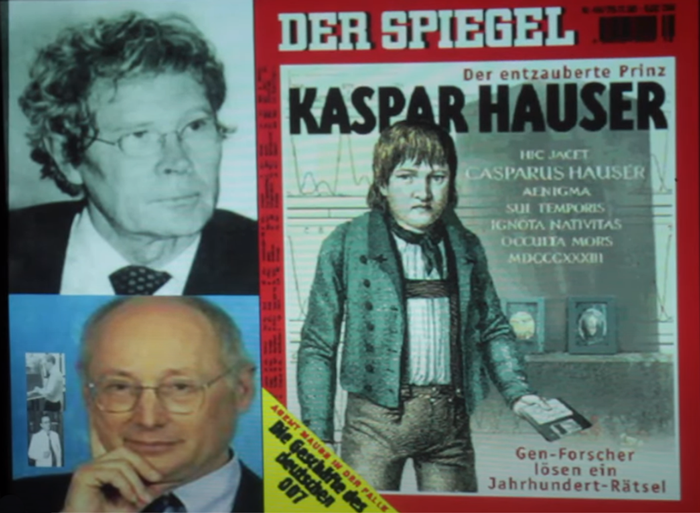
There are tons of articles, books, dissertations and studies about Kaspar Hauser that go all the way back to the time after his death. People have fought for the truth of this individuality, and opinions have been divided between authenticity and forgery.
On Kaspar Hauser’s grave in Ansbach, 25 km from Baden, it says on a stone:
Hic occultus occulto occisus est XIV dec MDCCCXXXIII – Here an unknown killed an unknown Dec 1833.
But today we know who he was, who killed him and who was behind it both locally and macro-politically. The story contains a small fractal, a downscaling containing the whole, of the buzz of history.

In 2001, Martin Kitchen, Prof. Emeritus of Canada, published a book entitled: Kaspar Hauser, Europe’s Child. The title alludes to the name given to him by the mayor of Nuremberg after his appearance in the city. Kitchen is otherwise a military historian specializing in British and American military, so why is he writing a book like this? It is in turn the worst attack ever on Kaspar Hauser’s person. Why all this fierce aggression if the story is just a romantic tale? Demeanor behavior again.
Six months later, a hitherto closed room was found in Schloss Beugen, and in it revealed, among other things. a drawing of a red horse. Outside the castle were buried 3,000 soldiers from the Napoleonic Wars who perished from typhus, which is why the locals never came near the site. In this castle, Kaspar Hauser was hidden away for a year and a half after he was abducted as a baby in Karlsruhe. This led to the French, via the television station ARTE, organizing another DNA test on the basis of a lock of hair that was guaranteed to originate from Kaspar Hauser (not like the underpants). This was compared to the female line in the house of Baden. The genetic match was 95%, which should be almost certain proof. Prof. Brinkman, who was in charge of the investigation, therefore concluded that Kaspar Hauser was the prince of the house of Baden. Der Spiegel has not since responded. Demeanor behavior again?
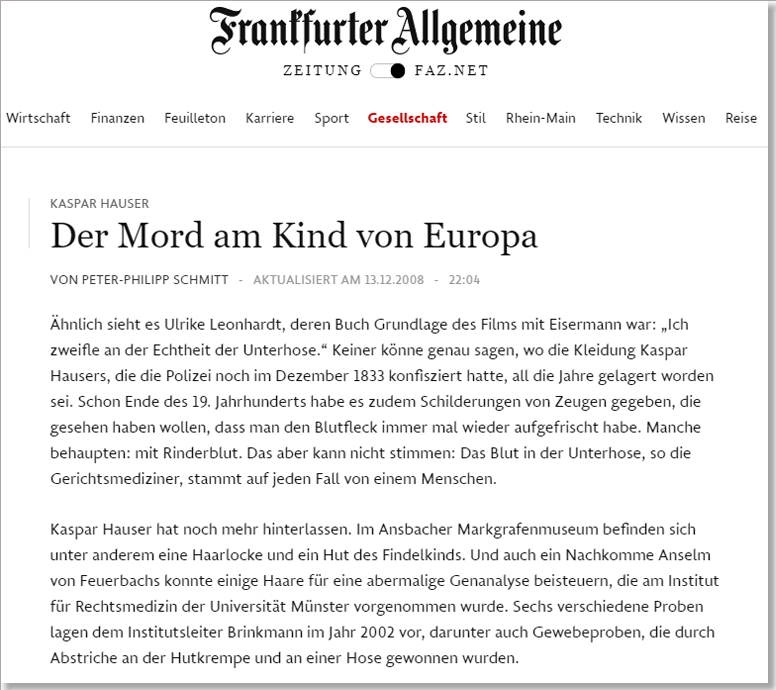
The English have been particularly diligent in throwing dirt at Kaspar Hauser. On the English Wikipedia – by the way, who puts their complete trust in that project any longer? – they are still today categorical in claiming that historians have long ago proved the legend as a forgery. They refer to i.a. Heinrich Heidenreuter. He then turns out to be the state archivist for the state of Bavaria, where Kaspar Hauser was imprisoned for the last years of his captivity. And the Earl of Stanhope, who was heavily involved in the assassination, stayed for a full 2 years in Bavaria afterwards, where he financed letters that were all to slander Kaspar Hauser. On the other hand, but in the same spirit, there are references to books about the Earl of Stanhope praising his accomplishments, but omitting a later over 600-page long and thorough book about him that shows a very different picture of the character.
If nothing else, this whole case shows something about the main problem of historicity, as mentioned in the beginning. It is constantly infected by lies, and the Empire is morbidly preoccupied with falsifying history. This is because the Empire legitimizes its privilege on the basis of history. If the real story was told and understood publicly, they might suddenly be left without privileges.
The story about the boy
Nuremberg is a Protestant city in a Catholic area. Kaspar Hauser appears for the first time on Umschlittplatz. Umschlitt is the fat that was cut from the slaughtered animals to make candle lights. It is almost symbolic.
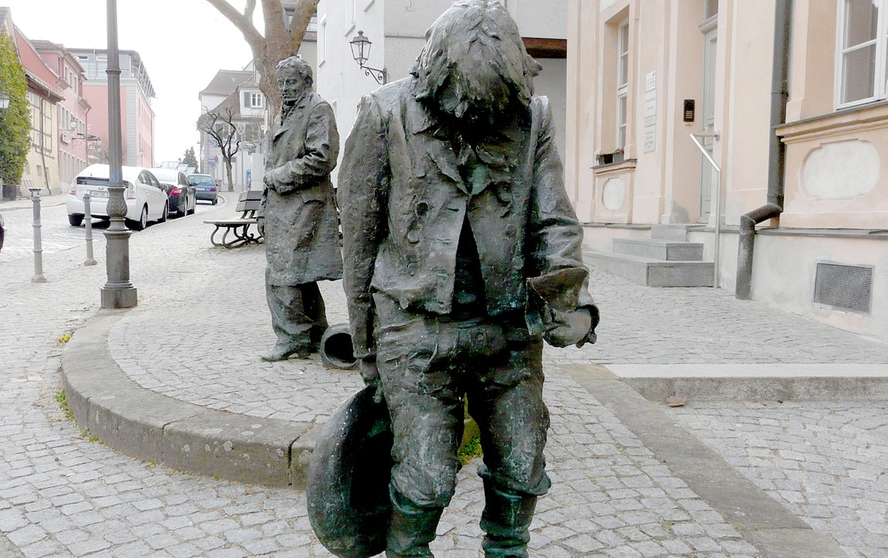
People sat as usual staring out the window, for not so much was happening, and the television was not invented. Then one day this strange peasant guy comes ravening, and when asked he answers in singing Bavarian: ‘I want to be a knight like my father’ – he did not seem to be able to say any other sentence. He could not say what his name was. He could barely stand on his feet, but had to lie down constantly. He was handed over to the police. Here he could eat nothing but water and bread – prison food. But when given the big boy who almost seemed to have a mind like a 3-year-old, a piece of paper and a pen, he wrote his name: Kaspar Hauser.
He was placed in jail. It was almost a public showroom where you could peek inside. Some mocked and ridiculed him, others gave him presents. He could not take it, and became almost insane by it. The local mayor opened his eyes to him. There was something about him that appealed and touched him. It was this mayor, that announced him as Europes’ Child and promised that the city would take care of him. A judge Feuerbach said one should get him out of here and find a teacher for him. They found a person named Professor Daumer, who housed him for 2 years and taught him an astonishing amount. Kaspar was incredibly teachable and made huge strides. And the reason why the whole of Europe learned about his ‘child’ was because Daumer wrote down his diary about his work with Kaspar and passed it on to the press every week.
Nürnberg
Albrecht Dürer painted the first truly personal portraits of world history here. The city lay on the trade routes with north-south and east-west. The Holy Roman Empire’s Charles IV had a special vision for Germany. He proclaimed something he called The Golden Sphere. He drafted a vision for Germany’s governance in the future. Germany should not be a state united with rigid power in the same way as the other great countries in Europe, France, Spain, England, Portugal, where the monarchies were blood and hereditary. Royal blood was the root of all evil. It should instead be an elected empire consisting of many small states. It is, after all, an almost democratic idea put forward in the late Middle Ages. The princes of the states had to choose their emperor, and therefore had to be on speaking terms with each other.
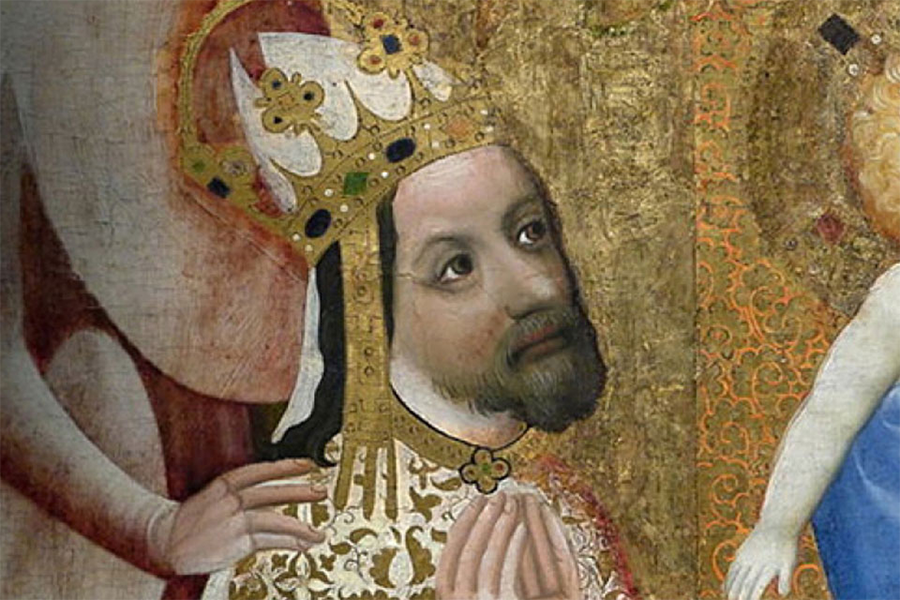
The crown jewels, the regalia were to remain in Nürmberg according to Charles IV. Rudolf Steiner calls him the last initiate.
The name of Nürnberg comes from Norne Mountain, and the Norse were the three destinies who weaved their threads at the foot of the world tree, Ask Ygdrasil:
- Urðr what has happened – the color white
- Verðandi what is happening (as in the making) – the color red
- Skuld what should happen (as in guilt and the verb should) – the color black
Nürnberg/Nuremberg is the earthly locality of the Nornes. The city later became home to another kind of ‘inauguration’, this time of a different dark character. The worldview of the Nazis was deeply occult, which is often downplayed by historians because they don’t know how to relate to it, and because their science is plagued by positivist flatness, where they, like other human sciences, have had to legitimize themselves against the natural sciences by being puritanically factual. The Nazis deliberately chose this place, which for them represented the heart and soul of Germany. While Berlin was the administrative capital, Nuremberg was for them the occult capital.

It was actually Napoleon who brought Kaspar Hauser’s parents together. Napoleon tried to unite Europe in the old way, the Holy Roman Emperor Charlemagnes way, with violence and power and war. Grand Duke Carl of Baden entered into a political marriage to reconcile Germans and Frenchmen in the area. In this way, Kaspar Hauser becomes Napoleon’s grandson through marriage. When he was born, Napoleon was on his way to Moscow. The West attacked the East in the same way that NATO today is pushing Russia at its borders to the south. The project is exactly the same: the West is occupying and destroying the East. In the intervening period, it was also part of Hitler’s project. It was part of the US NeoCons project when they attacked Ukraine by orchestrating a fascist coup and a neo-nazi government. As an official spokesman of the Russian government said a couple of years ago: It’s not the Nazis in Ukraine, we are nervous about. It’s the Nazis in Washinton DC.
Before the French Revolution, Germany consisted of 360 small states but was then reduced to approx. 30. with Bavaria as the largest. After the Congress of Vienna, Baden was largely unchanged.
2 weeks after the birth, it is announced that the otherwise healthy baby, later known as Kaspar Hauser, will suddenly die. In fact, he is removed and replaced with a child by a servant of the Grand Duke’s wife.
1812 was a landmark year. Tchaikovsky’s 1812 overture evokes memories of it and as a piece of program music, it describes the battle between Napoleon and the Russians at Moscow. Kaspar Hauser is born. And the comet Great Flaugergues appears in the sky. People are guessing whether this warning has anything to do with Napoleon, when it was said in folklore that comets meant the coming or death of a great individual.
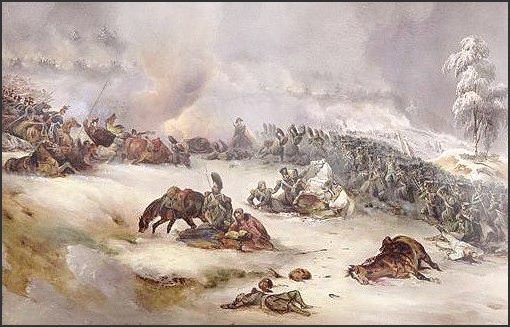
Napoleon fought Czar Alexander I. He was married to Kaspar Hauser’s aunt. The House of Baden married, as was the custom of the nobility, for opportune reasons their daughters to the various princely houses of Europe. He thus had an aunt in Russia, one in Sweden and one in Prussia. Thus the feudal Central Europe.
In England, on the other hand, the world looked different. Here the industrial revolution was underway. Child laborers were used as slaves in underground mine tunnels (due to their size), where they worked 12 hours a day. Children were sacrificed on the altar of the new industry. In his way, Kaspar also came to experience being sacrificed and thrown into an underground hole. The earnings from the English mines were managed by Augustus Frederick, Duke of Sussex (1773-1848), Grand Master UGLE of the English Masonic Order.
If one remembers the imperial main symbol, the two-headed eagle, it grabs hold of Europe. The body and head go like an axis with Denmark at the top and Italy at the bottom and Germany, Austria, Switzerland in the middle. Like the two wings, the West spreads with England, France, Spain and Portugal as one wing and the East with Russia, Poland, Belarus, the Czech Republic, Hungary and the Balkans as the other. The West is tight and disciplined and controlled. The east consists of huge and uncontrollable areas.
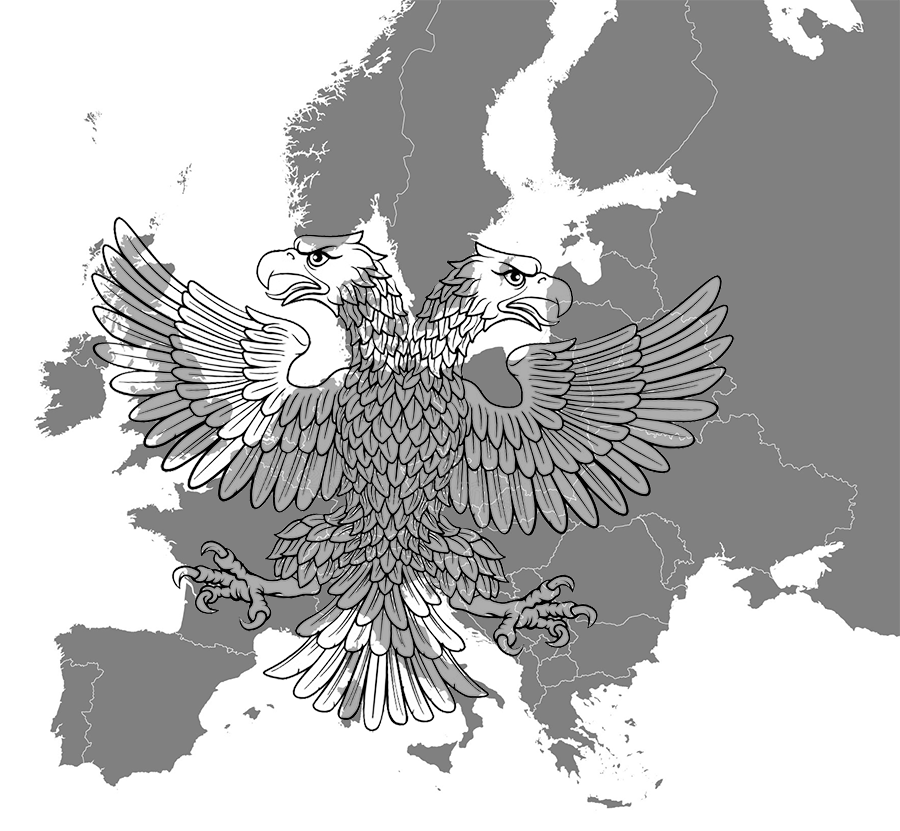
Freemasonry was strong and dominant in the West and Scandinavia. The Jesuits were strong in the East. Although the Jesuits originated in Spain and had a foothold in Italy, their militant monastic order had been rejected by the pope in 1777 and had sought refuge in Prussia and Russia. In Germany they were initiators behind the Bavarian Illuminati and Adam Weisshaupt and in France they were responsible for the creation of the Jacobins inspired by Weisshaupt and Jacob Franck. In Russia they were responsible for a branch of Jacobins, that were the men behind the provisional Government (Kerensky) that gave over the power to the Bolsjeviks.
Both orders of freemasonry had previously been split. The English and Irish branches were separated, but Augustus Frederick and his cousin the Duke of Kent, Queen Victoria’s father, regrouped them as a factor of power. At the same time, the Jesuit order was re-established by the pope. There is a strong masonic undertow in European power politics.
The assassination
Kaspar was looked after by the Hiltel family. The man in the house was a prison keeper and had seen some of the worst creeps on earth. But in Caspar’s case, he said: This is a pure human being. Doctors and scientists were also interested in him, finding that his knees were bent backwards, as a sign that he had been forced to sit on a stone floor. Next, it was Mayor Binder who declared Kaspar as ‘Europe’s Child’. And as mentioned his teacher, Georg Friedrich Daumer, whom Steiner calls the last Rosicrucian, that is to say, a man with a deep spiritual consciousness combined with the modern science of his time.
The education Kaspar received, had effect as well as side effect. He lost some of the special abilities. He had been able to see in the dark before. He could feel people from behind at a distance of 50-100 meters. He had strange physical sensations when humans or animals touched him. He could calm animals that were aggressive towards other people. He soon became a skilled rider, and horses had a deep meaning for him. We remember that he started by repeating: ‘I want to be a knight just like my father’. There was also the red horse in the room in Schloss Beugen. He had strange reactions to colors. He hated the color green and loved the color red. One can say that he loses the child’s abilities by becoming an adult. As adults, we often ignore the marvelous abilities of children and belittle them when they express their senses.
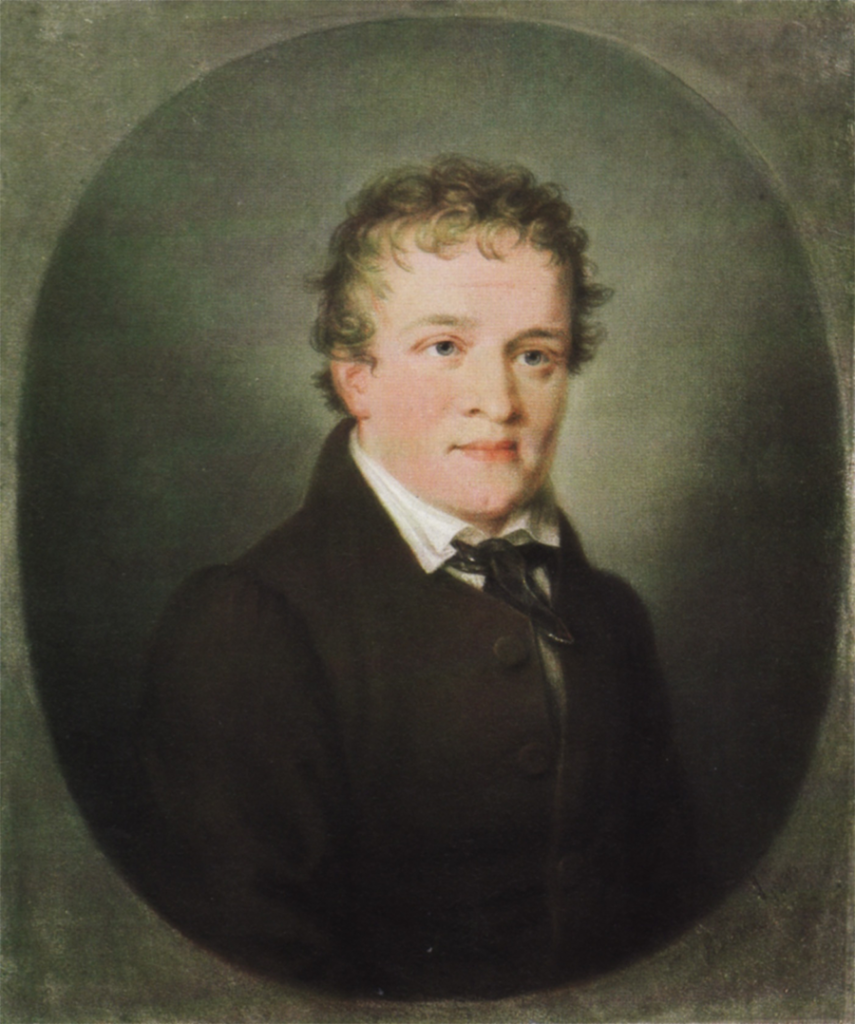
Daumer was a student of Hegel and was influenced by Shelling, Boehme and the German Pietists. He was also a homeopath – homeopathy had developed shortly before. Kaspar’s protégé, Anselm von Feuerbach, was one of Germany’s leading criminologists, and was fully aware that this was a crime. He wanted to get to the bottom of the matter, and it took him a few years, after which he discreetly published his findings and conclusions: Kaspar was the true prince of Baden and had been abducted and imprisoned. He was aware of the explosiveness of his finds and secretly gave them to various peoples of the elite. As a result, he became, in all probability and by his own admission, a criminologist and not a random paranoid! – poisoned in May 1833.
After this, a baron von Tucher takes over the protectorate. He was another of Hegel’s students. Hegel had taught in Nuremberg 1808-16.
The vicious lord
In 1831 Lord Stanhope appears. He was, according to his own statement, a descendant of Henry III and an old-fashioned tory, ie an elitist conservative. Remember what conservatives stand for in that sense: preserving the privileges of the elite over the lower classes. In addition, he was a secret agent and occult researcher. Stanhope removed Kaspar from his patrons in Nuremberg and places him with a particularly oppressive couple in Ansbach, Johannes Meyer and Mrs. Here, Kaspar was literally tortured with Latin. Stanhope pays them to do it. Meyer later wrote a slanderous book about Kaspar, also paid for and distributed by Stanhope.
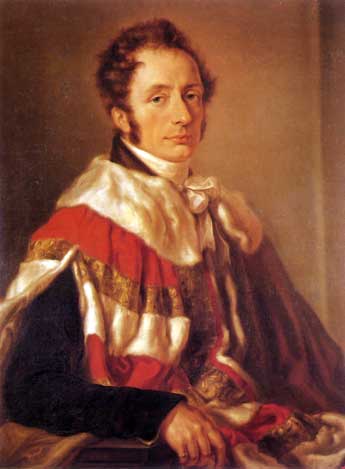
When Kaspar was stabbed with a knife in 1833, he was at the height of his vitality. Already his ability to survive in a dark dungeon suggests a very strong physique. After the sting, he was able to get up, walk back to Meyer’s house, tell him what had happened in the park. Meyer refused to listen to him, for he kept telling Kaspar that he was a swindler and a daydreamer. He insisted that Kaspar take him back to the park – he had not been seen by a doctor, so he was dying at the time – and here they found the purse the killer had given to Kaspar to lure him. It was December and freezing cold, a perverse torture in itself.
Kaspar died 3 days later, untreated by doctors. Meyer kept insisting that Kaspar had stabbed himself. This claim was absurd, for people who really knew Kaspar up close knew he was incapable of doing harm even to a fly, least of all himself. On the contrary, he was a survivor.
On the handle of the knife was an engraving with a motif (skeleton and bones) that was very common in Masonic circles at that time. The killer is known today, and so are his financial backers and clients. Terry Boardman summarizes the five forms of evil and individual murder / character murder that Kaspar Hauser was subjected to:
- Personal ambition on the part of two women (the two ‘Lady Macbeth’s in this drama): Countess of Hochberg and Grand Duchess Sophie in the form of abduction and murder.
- Territorial ambition on the part of two princes: Ludwig of Bavaria and Ludwig of Baden via imprisonment.
- A personal outburst on the part of two ‘servants of the event’: Major Hennenhofer (the killer) and Lord Stanhope via abduction, seduction, attack, murder and slander.
- Event design by two major powers: the British and the Austrian (Habsburg).
- The enmity between two spiritual power groups / covert orders: the Freemasons and the Jesuits.
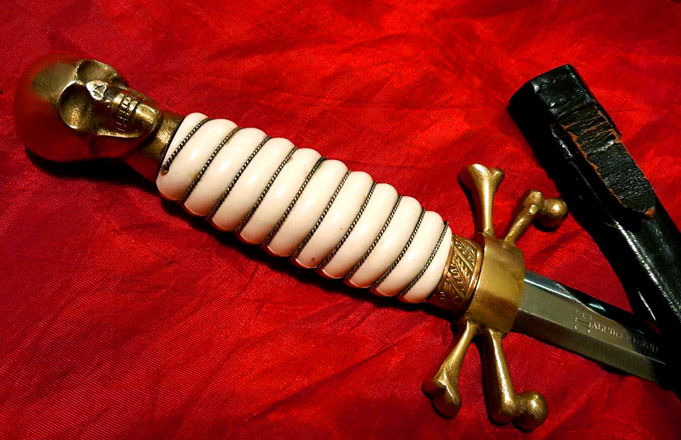
It is significant that the power struggle for the women was personal power and authority over the location of their offspring and their genes, so to speak. For the men, it was a territorial power. One led to abduction and murder, the other led to imprisonment. Next, there are the waiters, the wannabe’s, the spit lickers and the court snakes and their side role in the bigger games. Their play was via cunning and intrigue. Stanhope was so cunning in his seduction of Kaspar that he even made him ask to be transferred to the ‘torture chamber’ in Ansbach.
The spiritual power struggle
Behind it all lie the greater powers, the secular and the spiritual. Perhaps one should say pseudo-spiritual, since spirituality for both Freemasons and Jesuits is primarily power, and spiritual knowledge merely means. As it said over the old convent schools – I am sitting at the time of writing opposite my old Latin school Odense Cathedral School: Knowledge is power. That means two things. You can get knowledge here if you are a good student. It also means from the point of view of the elite: our knowledge and other peoples ignorance is our power. Well, you or they will never know it all, because they keep the best for themselves. Whether you are one of them depends on how you behave. Latin as an artificial language was as far as possible a way of encrypting knowledge so that people generally did not share in their knowledge. Later, other and sophisticated ways of encrypting knowledge were developed.
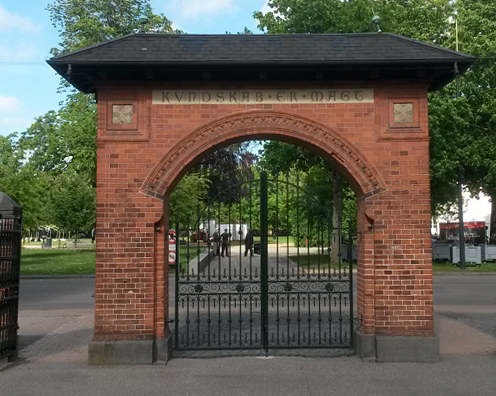
These two pseudo-spiritual groups belong to England (the Freemasons) and to the Habsburgs (the Jesuits), respectively in Austria. Let us here call them pseudo-, for otherwise we will also have to call Hitler, Göring, Himmler, and the entire Nazi leaderhip spiritual people, as they were all brought up by Jesuits and were manically amazed at occult subjects. Himmler modeled his organization after Loyola. Or we have to go on a long investigation to map spirituality and its double-edged sword.
The agenda of the secular powers, England and Austria, was to make sure that no one related to Napoleon ever gained access to a throne in Europe. So when the English found out that Kaspar Hauser aka the missing Prince of Baden had appeared, they sent an agent after him to track him down and make sure he disappeared from the scene permanently.
When one wants to murder a human being in earnest, one must attack all aspects of its being: its body, its personal ego, its identity and its soul. Kaspar Hauser experiences the whole extract.
One and a half years before the final assassination attempt, there was an assassination attempt while Kaspar Hauser was in Daumer’s house. Someone tried to chop him down with a meat ax, but he survived with a scar on his forehead. His supernatural abilities were disappearing at the time, but now, strangely enough, they came back for a while. He became, understandably, very timid.
Kaspar had several relatives with parallel fates. The grandfather died in an accident in Spain. His father was poisoned in 1818. His brother, Stephanie, lived only one year before he was poisoned. The woman behind this, the first Lady Macbeth in his personal history, had the telling name Luise Geyer von Geyersberg. Geyer in German is a vulture so her name was Luise Vulture from Vulture Mountain! Another of the ironic names of history. She was aware of it herself, so she changed her name to von Hochberg, the High Mountain. The goal for her was to insert her own son, Leopold. She persuaded Ludwig, Kaspar’s father, not to have children himself, so that he in turn could remain Grand Duke and have fun with all his mistresses. He did so for 10 years.

One of the descendants today is named Max von Baden, one of the richest landowners in Germany. His grandfather was also named Max, and he was the last chancellor of the German Empire. He was only chancellor for 2 months, a position he used to, so to speak, shut down the empire. During these two months he had a couple of times a visit from Rudolf Steiner, who tried to convince him to create peace between the nations of Europe after World War I on the basis of what he called ‘the three-part structure’.
Von Baden chose instead to conclude a peace agreement based on US president Wilson’s 1 point, which should prove to be catastrophic for the entire continent. Steiner saw the catastrophe coming and thus a new war, but von Baden was neither wise nor independent enough to follow Steiner’s advice.
Steiner describes it as the spiritual capitulation followed by the military capitulation for Germany. We even pay the price for it today. Steiner’s conversation with Max von Baden in is the direct result of the crime that happened in relation to Kaspar Hauser committed by the Vulture from Vulture Mountain. Steiner offered von Baden to restore what his own ancestors had done of the injustice to humanity, but von Baden merely added insult to injury.
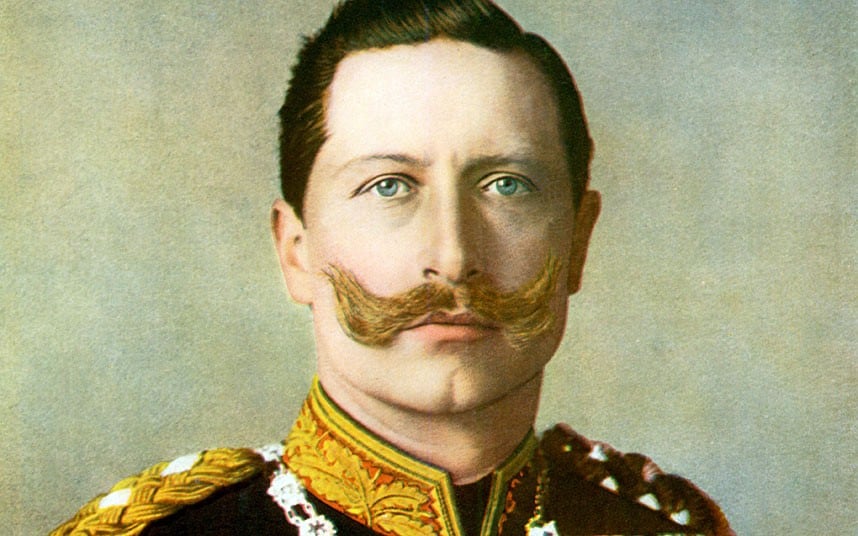
Therefore they fell from their thrones.
The loose idiot
One more look back.
Here, the plot gets a little complicated. Ludwig of Bavaria, the second Ludwig in history, himself suffered from a kind of homelessness. He grew up in an involuntary enclave of Baden, which Napoleon had stolen from Bavaria and given to Baden. He spent his whole life getting this piece of land back to Bavaria. England and Austria did not allow him to take it back by force. He therefore arranged the abduction and imprisonment of this prince, Kaspar Hauser, who they knew was the Prince of Baden. Next, they released him at the particular time he had become an idiot. They put him back on the chessboard as a pawn to communicate: If you do not give us what we want, that is, the stolen piece of land, then we will reveal to the whole world who this boy is. And then you’re done. But the venture did not succeed, and Leopold of Baden proclaimed that he did not care, even though his mother had been involved in the abduction.
Ludwig of Bavaria’s personal adviser was the Jesuit and Bishop of Regensburg, Johann Michael Sailer. Throughout their historical work, the Jesuits’ tactic has been to stick up with princes and rulers as their personal confessors and mentors and corrupt them from within, so to speak. Steiner has a special angle on it. Boardman does not fully agree with this theory, although he is a Steiner adept. He is too much of a historian at the same time. Steiner believed that the Jesuits were the real culprits behind the entire Hauser case, which is not entirely unlikely. But the very reason why they did not just liquidate him was also due to the fact that they had occult knowledge. The Jesuits were highly educated people with great knowledge of Eastern philosophy, and their connection to Chinese philosophy was unsurpassed. They knew, Steiner believed, that if you just killed him, he would reincarnate immediately and they would have the problem again. Therefore, they kept him imprisoned and simply character murdered for as long as possible. And had they not been for the intervention of the English Freemasons, he would have been a useless idiot for the rest of his days. Boardman leans more towards the pawn-on-chess game explanation. And we are here in one of the not quite solved areas of the whole enigma of Kaspar Hauser.

Just notes here:
- Stanhope’s connection to another spy, Metternich,
- Stanhope on Sicily, the Mafia and Cor Leone,
- Klingsor and the figures from the Wagner mythology,
- Lines drawn from Sicily to Nuremberg, London to Vienna and Karlsruhe to Karlstadt, which together form a special cross,
- Stanhope’s extinct lineage is mapped,
- connections to Lord Carrington, Margaret Thatcher’s Secretary of State, Bilderberg Group, Chevening scolarship for Commonwealth countries,
- Stanhope’s connection to Benjamin Disraeli and Edward Bulwer-Lytton who wrote a famous esoteric novel about the old and the new school occult initiation – again the underlying stream of Masonic secrecy and the pursuit of power through black magic.
- Bulwer-Lyttons søn blev i øvrigt ved Disraelis hjælp den første vicekonge i Indien, hvor han bragte England ind i den 2. afghanske krig (hvilket nummer i rækken har vi nu?).
Disraeli also mediated a marriage between Hannah de Rothschild and Archibald Philip Primrose, Lord Stanhope’s granddaughter. He describes Chevening, the elite education center, as ‘paradise on earth’. He was a member of a group of liberal imperialists along with Sir Edmund Gray, Prime Minister Herbert Asquith and War Minister Haldane, who led England into World War I. We later find the same type of people around Winston Churchill, a group called Focus. Their mission was with the help of this guy to start WW2 and blame it on the Germans.
Just taking notes here, since Terry Boardman pulls out further threads about what the men in the Stanhope circle were working on in their spare time: occultism and black magic. They do so in no way because they want to be enlightened individuals, but because they are obsessed with the idea of power that cannot be seen but that works. Like all imperialists, somewhere they have felt irritation over all the blood, the embarrassing assassinations, the atrocities on the strip that they and their like-minded and predecessors have participated in, and have felt the urge for one more, shall we say, ‘elegant ‘version of the same. Not bad conscience, just irritation.
We can see a direct line to later groups, such as ‘The Fabian Society’ by socialist, collectivist and cynical philosophers based on Cecil Rhodes and the Round Table over H.G. Wells and on to Aldous Huxley and Bertrand Russell. Their philosophy was that the brain-dead masses should be slowly brought up to love their own slavery, which would make all the brutal slaughter superfluous and thus lessen their own degree of irritation. Blood sticks to the hands and it smells. The Fabian fingerprint can be seen today via Agenda 21/2030.
The German Revolution started in Baden and ended in Baden, where it was crushed by the Prussian army. Why there? Because Baden was the most progressive and liberal state in Germany – both words in the original and not later perverted form.

If Kaspar Hauser, with the personal qualities he possessed, had become a leading figure in the new Germany, things would have been different. But he was the missing piece in the game, he was removed. But there had been people who would have cooperated with him. Eg. the Jewish leader of the early Social Democratic movement, Ferdinand Lasalle, a truly visceral and cordial person. He was killed in 1846 because of his nature and attitude / potential. Or Louis II, the fantast who, among other things. built Neuschwanstein based on Wagner’s operas, especially Parsifal. Wagner’s operas are all about the struggle between the execution of the Germanic fate and the attack on it by evil interveners. It has been misinterpreted as carte-blanche to the Nazis’ version of the same narrative. At least we have a Bayreyt Opera House due to Louis II.

The swan knight Lohengrin is a picture of a new type of leader. Oddly enough, one of the last protectors of Kaspar Hauser was a priest, Pastor Furhmann, who confirmed Kaspar Hauser in Saint Umbertus Church in Ansbach, in the chapel of the ‘Swan Knights Church’. The Teutonic Knights are at stake here, successors to the Knights Templar, who had to go underground after the assassination of Phillip the Beautiful on the Order after ‘Friday the 13th’ and the attack on the Albigensians in the South of France. That’s what the whole Wagner mythology and its Grail legend revolves around.
Otto von Bismarck is best known as a Prussian leader in all his power and might, but he was a far more nuanced person than we usually get to know. He had intimate contact with Ferdinand Lasalle, and it was from him that he learned about the welfare state, which he later set up in Prussia. It is also from Bismarck that we hear extremely critical remarks about the brutal and greedy elite that is about to corrupt America at that time. And from a Danish point of view, we still suffer nationally from the foolish and embarrassing mistakes that led to the war with the Germans and the traumatic national defeat in 1864. The Danes played a stupid game against the Germans and were punished for it. Bismarck offered Denmark to Flensburg / Nord Schleswig, with the Danish king demanding Denmark to River Eider / South Schleswig. Then Bismarck said: If that is your choice, then we march to the Limfjord in North Jutland and retreat to Kongeå. And so it was due to the foolish Danish king and his bad advisers, that Denmark was occupied by the Prussians and lost old Danish land from the Viking Age.
Had Kaspar Hauser been a new monarch, he would have been able, through his personal qualities, to have collaborated with Bismarch, Louis II and Lasalle – and Prince Albert of England. He was married to Queen Victoria, and was actually a rather interesting man. He died far too early in 1861 (accidentally?). Instead, posterity saw rather toxic and hateful relations between English Edward VII and German Wilhelm II and World War I.
As mentioned, Max von Baden became the last chancellor of the German Empire on October 3. On the same date, Germany was reunited in 1990. He wound up the Republic on November 9, 1918 – that is a reverse 9/11, not October 11. This date also coincides with ‘Kristalnacht’ 1923, Hitler’s attempt to seize power in Munich. And in our time November 9, 1989: The fall of the Berlin Wall!
Coincidence? Impossible, especially when we come to learn about the obsession with numbers, dates, names and symbols of the ruling class.




